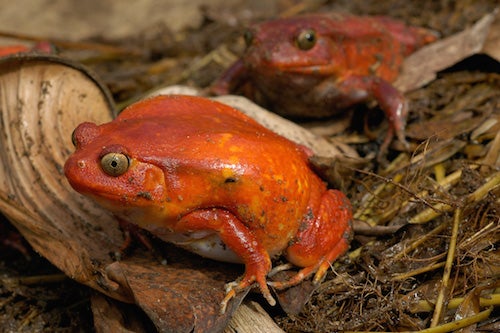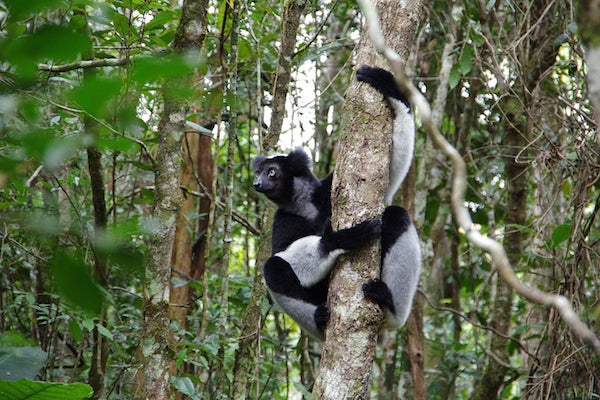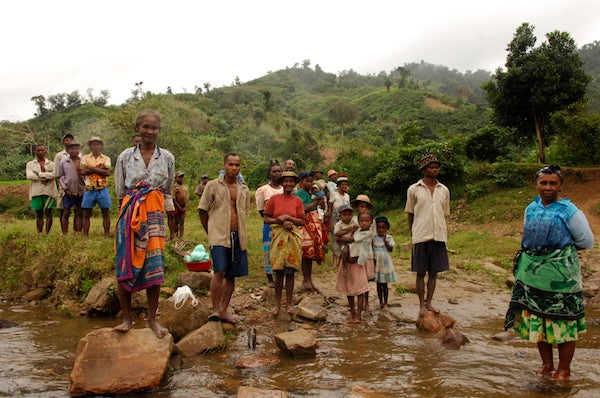This article was published in Scientific American’s former blog network and reflects the views of the author, not necessarily those of Scientific American
The land of the lemur has a few lessons for us all – especially as international climate change talks in Paris unfold. While most of the headlines will focus on the global growth of carbon-based industries, there’s good reason to likewise pay close attention to deforestation, another significant source of carbon emissions.
Deforestation represents around 15 percent of global emissions, more than all the cars and trucks in the world combined. Madagascar - the world’s fourth largest island, just off the east coast of Africa, may not be on very many peoples’ radar. It has been celebrated in animated movies by DreamWorks but more importantly it holds 5 percent of the world’s biodiversity and a rapidly growing population of 23 million people, of which around 80 percent live below the poverty line.

The island nation of Madagascar holds 5 percent of the world’s biodiversity, including such unique species such as the tomato frog. Photo by Julie Larsen Maher ©WCS
On supporting science journalism
If you're enjoying this article, consider supporting our award-winning journalism by subscribing. By purchasing a subscription you are helping to ensure the future of impactful stories about the discoveries and ideas shaping our world today.
Madagascar may just be the place to look for practical and integrated solutions to the triumvirate of problems that many parts of the developing world are facing: climate change, biodiversity loss, and increasingly vulnerable, poor, rural populations.
On a recent trip to Madagascar I visited the Makira Natural Park, created to protect one of the largest remaining blocks of rainforest in the country. Covering 1430 square miles – more than 40 times the size of Manhattan – the park also contains the highest number of lemur species in the country and around 50 percent of Madagascar’s floral diversity, while supporting the livelihoods of around 90,000 people.

Four critically endangered lemur species are protected in the 1,438-square mile Makira Natural Park, including the Indri, pictured here. Photo ©Miguel Pedrono.
This park, established by the Government of Madagascar in collaboration with the Wildlife Conservation Society, protects one of the largest and richest forests in the country – an area resilient enough to adapt and persist as a functioning ecosystem despite the expected impacts of climate change.
.jpg?w=600)
Parks such as these hold huge potential to keep carbon locked up where it belongs. Intact forests also mop up further carbon dioxide through continued growth, partially counteracting emissions from other sources. What’s more, protecting Makira’s forests allows us to link strategies to build resilience to climate change at a local and sub-national scale to the global challenge of a warming planet.
Whilst working together to implement actions that avoid deforestation, government, local communities and WCS jointly generate carbon credits that are sold on the global voluntary market. These sales create a sustainable source of financing that contributes important resources to the implementation of a double headed approach to increasing both ecological and social resilience.
Ecological resilience is enhanced both through protection of remaining forest against illegal clearing, and through restoration of forest corridors between degraded blocks of forest both within the park and between adjoining blocks of forest in the landscape that allow wildlife the opportunity to move in search of resources as altered climatic regimes impact their habitats.

Revenues derived from the sale of carbon credits in Madagascar’s Makira Forest enable local communities to participate in conservation activities through grants for community development projects. Photo by Julie Larsen Maher ©WCS
At the same time human vulnerability to climate change is addressed. Revenues from sales are used to incentivize local communities that successfully participate in conservation activities through grants for community development projects. Such actions can be leveraged to achieve big results.
As they access infrastructure or technical training programs that implement climate-smart agricultural practices, enhance agricultural output, and expand livelihood options, these communities increase their ability to withstand or rebound from climatic shocks and changing climatic conditions.
The results speak for themselves: a doubling of household incomes in surveyed villages around Makira; an avoidance of the loss of 23 square miles of forest between 2005 and 2013; deforestation rates in community managed forests halved between 2012 and 2014; and over 700 acres of new forest established to increase connectivity for highly endangered lemur species.
We are now actively conserving forests in Madagascar that hold some of the most globally important biodiversity in the world. This model is one that could be refined and improved over time, as we expand these programs to bigger scales.

Makira Natural Park, established by the Government of Madagascar in collaboration with the Wildlife Conservation Society, protects one of the largest and richest forests in the country. Photo by Julie Larsen Maher ©WCS
My greatest wish is that the talks in Paris during COP21 will significantly advance an agenda for an internationally recognized and adequately funded pay-for-performance model that rewards forest-dwelling communities for keeping their forests standing. Our hope is that long-term behavior change will create the framework for a sustainable future by matching reductions in deforestation with the finances that are needed to pay for the nuts and bolts of conservation.
Dr. Cristián Samper is president and CEO of WCS (Wildlife Conservation Society). Follow Cristián on Twitter at thislink.